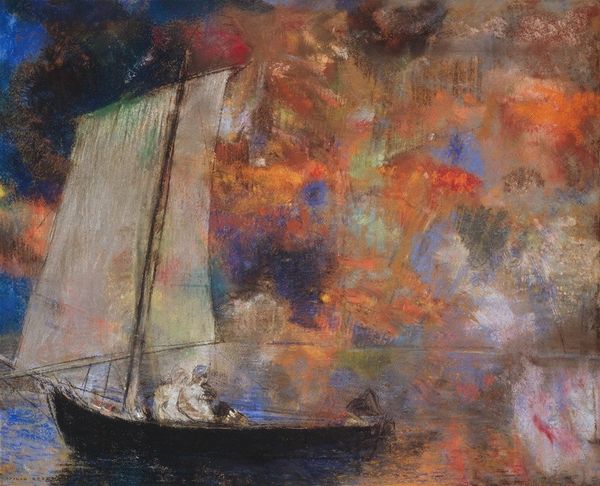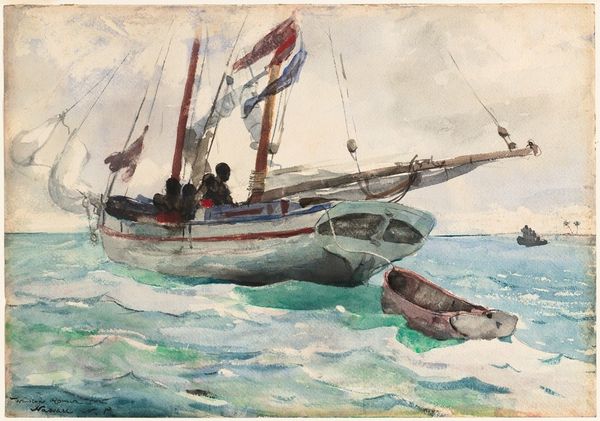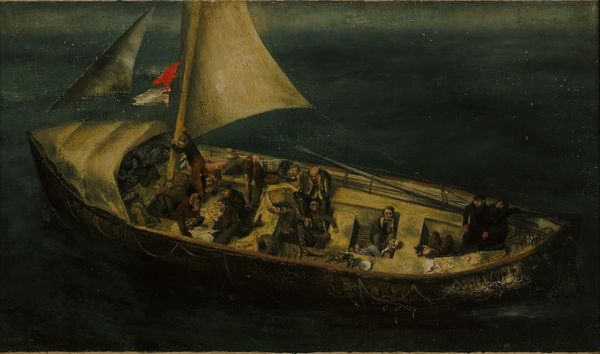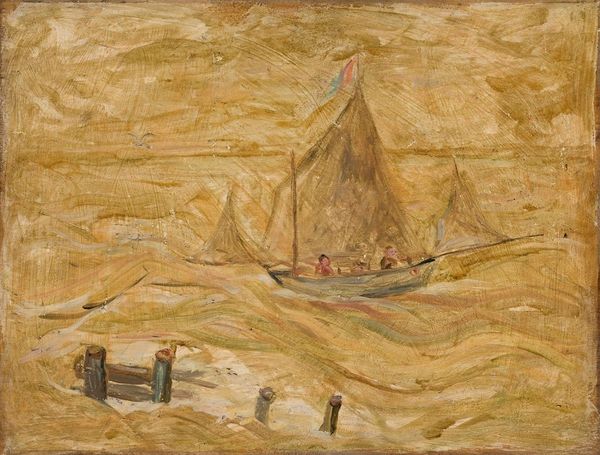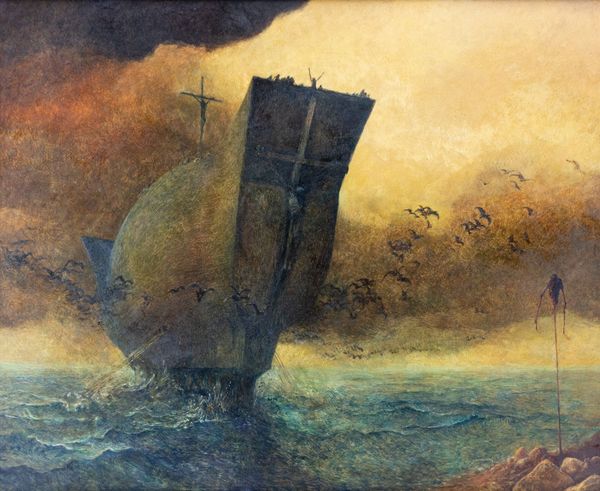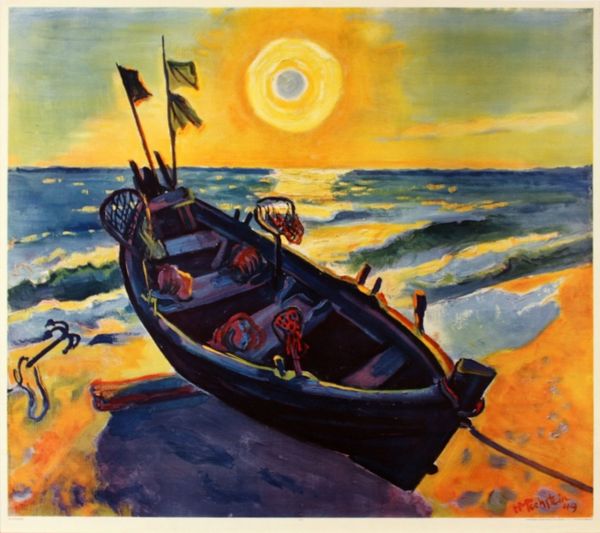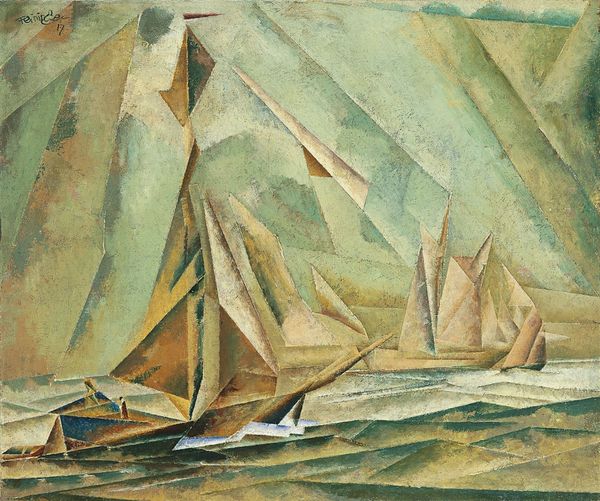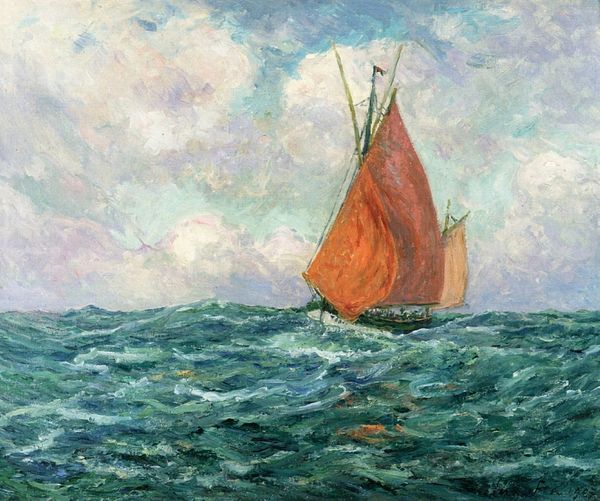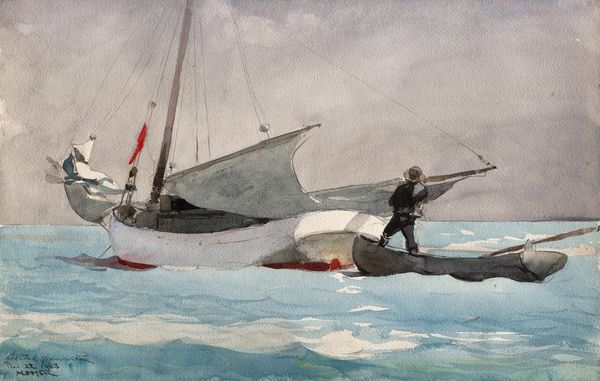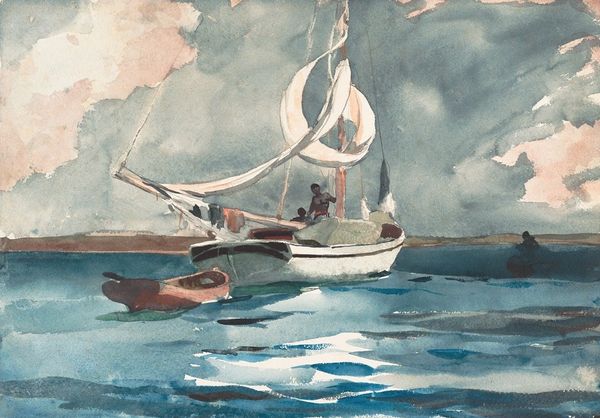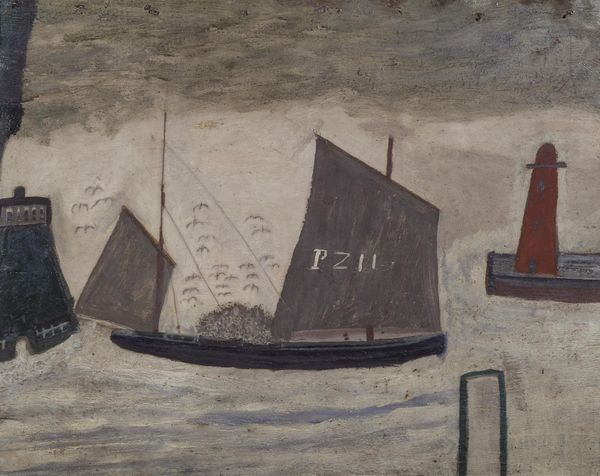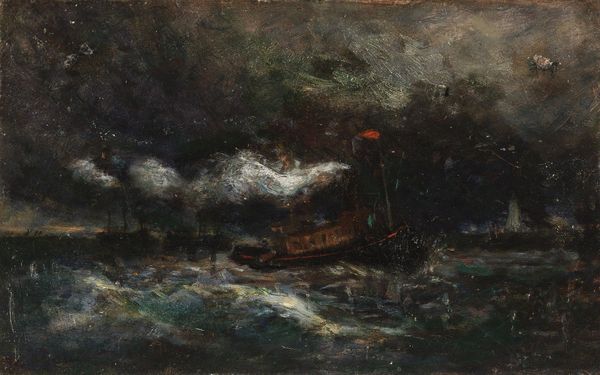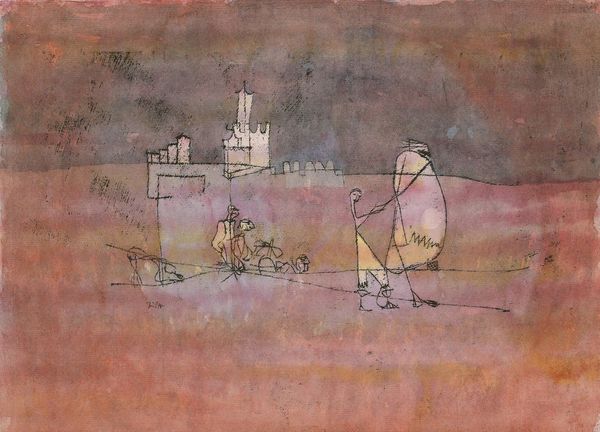
Copyright: Gustave Buchet,Fair Use
Curator: Gustave Buchet's "Marine," painted in 1951, is a compelling depiction of a ship battling the sea. The artist used a mixed media approach to create the artwork, resulting in an intriguing texture. Editor: My first impression? It feels turbulent and heavy, like a visual storm. The somber color palette, dominated by browns and blues, gives it a somewhat ominous quality. Curator: That’s astute. Consider that in 1951, the world was still reeling from the Second World War and the start of the Cold War. This artwork captures a prevailing sense of anxiety and instability present during the Post-War years, where established political structures faced existential threats and reconstruction was just starting. The artist may have wanted to show the power of nature against man and machine. Editor: From a formal perspective, observe the ship's dramatic tilt and placement within the canvas. Its diagonal axis and the choppy brushstrokes indicating water evoke both dynamism and precariousness. The masts act as visual stress points—vectors adding tension to the composition. The lack of a horizon line contributes to a sense of disorientation, further magnifying the disquieting sensation. Curator: This painting could be a critical commentary of naval power structures during the time or a memorial to sailors lost during war. There may have been a personal connection; Buchet served as an interpreter during the First World War. I'm drawn to the ways it seems to be reflecting and critiquing authority using universal metaphors of sea and storm. Editor: You make an interesting point. I saw that ship as a shape contending with shape. Your contextual reading makes the muted palette even more affecting – those colors aren't just atmospheric; they are carrying socio-historical weight. Curator: Yes, and thinking about "Marine" prompts further inquiry into the artistic networks and patronage of expressionist painting. Considering the impact and effect of art from periods of social unease help us in the contemporary landscape. Editor: Ultimately, what remains most compelling is how Buchet manipulates form and tone to deliver us not merely an image of the sea, but the sensation of facing something immense.
Comments
No comments
Be the first to comment and join the conversation on the ultimate creative platform.
